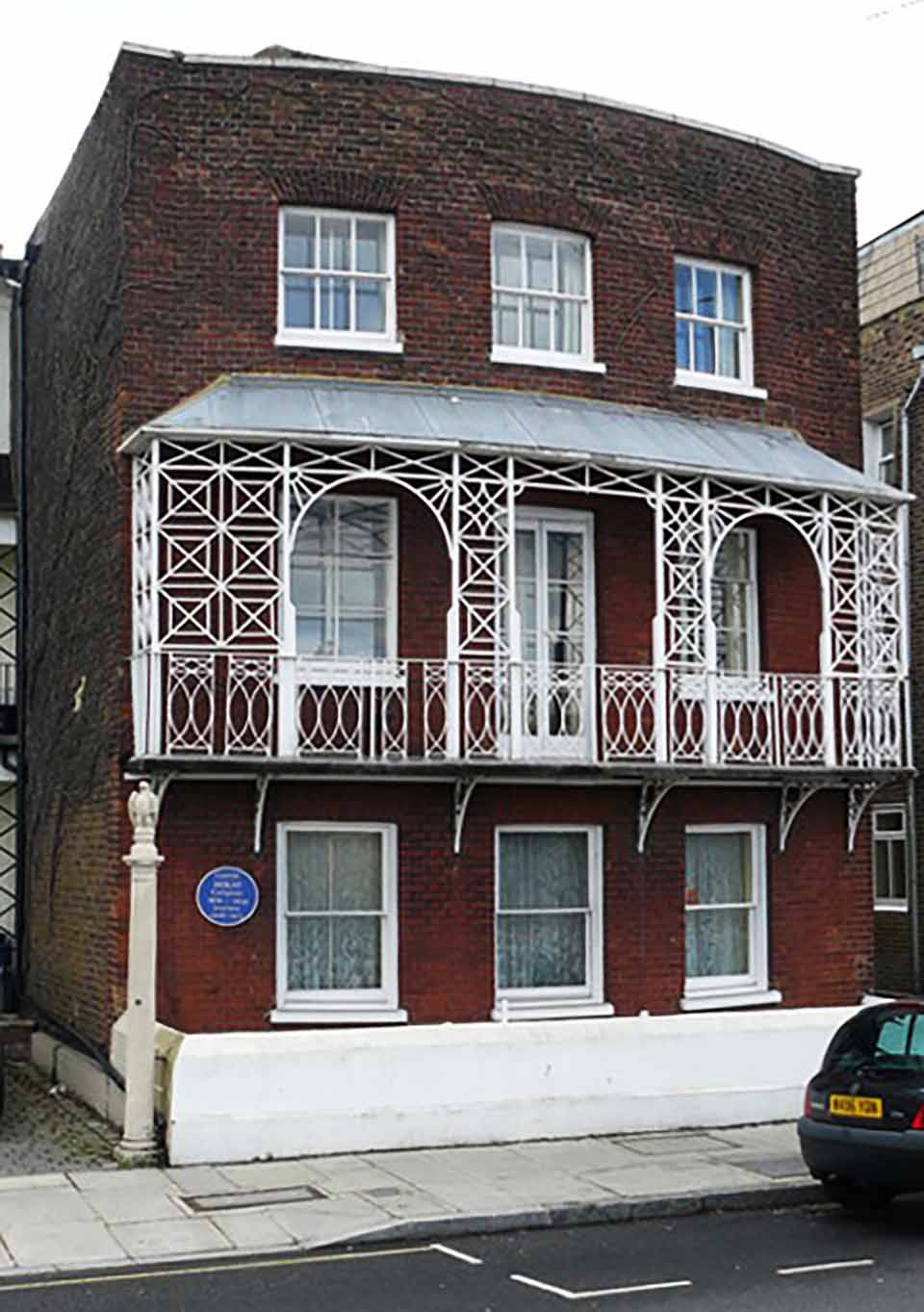
A long time ago, when I was a music student in London, I lived in a delightful village-like leafy suburb called Barnes, which lies on the South Bank of the River Thames. Fifty years earlier, between 1908 and 1913, the English composer Gustav Holst also lived there – just down the road from my place. He had a charming Georgian terraced house that directly overlooked the river. The house is still there, though today the area is not as tranquil as it was in those far-off days.
Gustav Holst is best known for his massive orchestral suite entitled The Planets which tends to overshadow everything else he wrote. He wrote an awful lot too: eight operas, ballet music, a vast amount of instrumental and orchestral music including a symphony, along with hundreds of vocal and choral works. His music was influenced by English folk songs, Hindu mysticism, late-Romantic composers like Strauss and Delius and the then avante-garde composers Stravinsky and Schoenberg. Sadly, history has not been kind to Holst and these days, apart from The Planets his music is rarely performed.
Holst had a practical start, for after studying composition at London’s Royal College of Music, he spent the early part of his career playing trombone in an opera orchestra. As a composer, his earnings were too little for survival and he accepted the offer of several teaching posts, one of which was Director of Music at St Paul’s Girls’ School in Hammersmith. I used to pass this distinguished school every day on my way to college. The school not far from where Holst lived in Barnes.
One of his contributions was recognizing the musical potential of the band. Bands first evolved in the military and Britain’s Royal Artillery Band was established in 1557. By the turn of the 20th century, the term “military band” was used in Britain to describe any ensemble that incorporated woodwinds (including saxophones), brass and percussion. This was in contrast to the brass band, which as its name implies, did not include woodwind instruments. Today the word “military” is rarely used and bands are usually described as concert bands, wind bands, symphonic bands or more recently, wind orchestras. In Holst’s day, much of the music played by wind bands consisted of popular music and orchestral transcriptions. But he was to change all that.
This work is one of the cornerstones in the concert band repertoire. It was first performed in 1920 at the Royal Military School of Music and it convinced many other composers that “serious” music could be written specifically for band. The work includes some of the composer’s most enjoyable and approachable music.
In three movements, the entire suite is based on an eight-bar melody which sounds like an English folk song. But it’s not. The melody was composed by Holst himself. Strangely enough, it’s not known why Holst composed the work, though he was unsatisfied with the quality of band music at the time. The suite is perfectly scored to handle the characteristic qualities military band instrumentation.
This sparkling performance is given by one of Japan’s top ensembles. It was originally founded in 1960 as had since given performances world-wide. And incidentally, if you enjoy this work, you’ll surely appreciate the composer’s Second Suite for Military Band in F major Op.28-2 also available on YouTube.
Gustav Holst: Hammersmith, Op. 52. CSU Wind Symphony cond. Rebecca Phillips (Duration 14:02; Video: 720p)
Hammersmith is a sprawling urban area of West London on the North Bank of the Thames. It featured in the Charles Dickens novel Great Expectations though much of the district is somewhat grim and down-market. Holst’s eponymous piece takes the form of a Prelude and Scherzo, commissioned by the BBC in 1930. It was first performed in 1932, ironically not by the BBC but by the United States Marine Band. Then for twenty years the piece lay forgotten and it was not revived until the 1950s. The music is more harmonically advanced that that of the Suite though it’s brilliantly orchestrated. It begins with a haunting depiction of the Thames flowing underneath Hammersmith Bridge. Imogen Holst, the composer’s Holst’s talented daughter and biographer wrote, “The work is not programme music…but the outcome of long years of familiarity with the changing crowds and the changing river…those Saturday night crowds, who were always good-natured even when they were being pushed off the pavement…and the stall-holders in the narrow lanes…the large woman at the fruit shop who always called him “dearie” when he bought oranges for his Sunday picnics. As for the river, he had known it since he was a student. During all the years, his favorite London walk had been along the river-path.”
Recently Gustav Holst’s six-bedroom house in Barnes was up for sale, with three bathrooms, entertaining spaces, a wine cellar and of course the superb view across the Thames. The asking price was about 125 million baht. I almost bought it, but then I remembered the British weather.
 |
 |
 |





